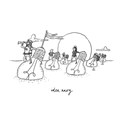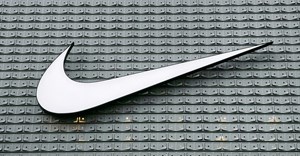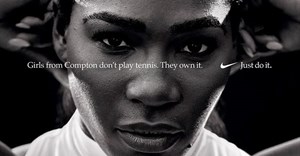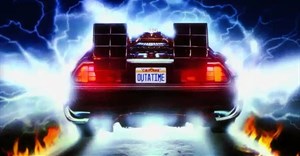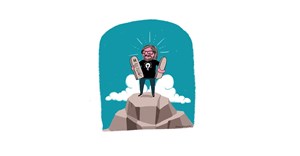Trending
Elections 2024
Jobs
- Studio Account Manager Cape Town
- Social Media Manager Cape Town
- Advertising Sales Executive Countrywide
- Creative/Conceptual Copywriter Cape Town
- Activations Manager Johannesburg
- Copywriter and Content Producer Cape Town
- Delivery Director Sandton
- Junior Art Director Cape Town CBD
- Paid Digital Media Strategist Durban
- Senior Graphic/Digital Designer Cape Town
Anybody want tickets to Fyre Festival?

The recent documentary Fyre on Netflix is about a music festival that became a slow-motion car crash in the Caribbean. It was sold by influencers and models on Instagram as a baby Coachella on Pablo Escobar’s Island. It turned into Lord of the Flies for rich kids with yoga pants.
It is a cautionary tale about what happens when you can no longer tell the difference between the advertising and the product. In fact, in this case, for many, the advertising was the product.
One of the telling comments in the documentary was that the real Fyre Festival was the photo shoot that happened before the festival itself.
While watching this, it was easy to laugh. And I did, while covering my eyes from the impending doom. All the ingredients were there:
- Magnificent stupidity.
- No appreciation of why you need professionals.
- People trying to pretend time doesn’t matter.
- Self-belief and ego on a gargantuan scale.
- People thinking that talking is the same as doing.
These ingredients are not new in our business. What has changed in the last couple of years is the clear delineation between communication and reality. Which comes first? The Fyre festival is a great example of this, but social media is littered with many others. The subject is the object. The communication has become the product. It is what is being sold. It is what is being bought.
It got me thinking about the gap between what brands do and say and where those gaps will be in the future.
One of the strange things about our business is you will meet many people who think advertising is bulls#it and is a waste of money. You will also meet people who think it can fix almost anything. And I do mean anything. The crazy part is they are often exactly the same people. It just depends on what they are dealing with when you meet them.How close is reality to biting? How authentic are they prepared to be? What are they prepared to say? Where this all gets interesting is when they have to back up what they say.
Over the last couple of years, this question has become far more important. Building brands that have a purpose has become a big discussion in our industry.
Take Nike, Pepsi and Gillette as examples of work that have had varying degrees of success using this idea. I am sure there is a wide range of opinions on the idea of brand purpose and the specific work I have mentioned.
However, I just want to make two points about this direction with regards to authenticity and the range of emotions marketers will have to deal with going forward from the public.
Firstly, brands that actually live their purpose will have far more success. And purpose is not something you can just manufacture. It is a behaviour. Done well, it can make the brand distinctive and connect with the community it is in.
Think about what Nike did with Colin Kaepernick. It was a risk that was mitigated by the brand itself. Very few brands could do this, because they don’t have the track record. Are they really doing it and have they always done it, will always be the questions to answer.
It might seem obvious, but there are still brands out there doing exactly what the Fyre Festival did.
With social media, the danger in doing this is considerable. The world is watching.
Communications about purpose without any authentic experience is not an option. For the brands doing this, welcome to the island, the people are pissed off and they are telling their friends.
The other point is that to do this successfully, you have to be comfortable with a little hatred or perhaps quite a bit. This is going to get weird for a lot of brands and I think some won’t be prepared for what could happen.
To have a purpose, you have to have a point of view. That point of view will not be universally liked. That is almost certainly guaranteed.Nike and Gillette experienced this in fairly extreme ways ranging from shoes being burnt to razor blades being flushed down the toilet. All online, of course. How a brand can backup what it says will allow it to absorb this kind of pressure and hold the line. If you are not authentic, welcome to the island, have a Pepsi.
The world is changing, but then again, maybe not. It would seem in a fractured media landscape that has both social influencers and big brands trying to shape reality, albeit in very different ways, one thing will always holds true:
If you say it, you better bloody do it.
“If you stand for something, you will always find some people for you and against you. If you stand for nothing, you will find nobody against you, and nobody for you.” – Bill Bernbach













